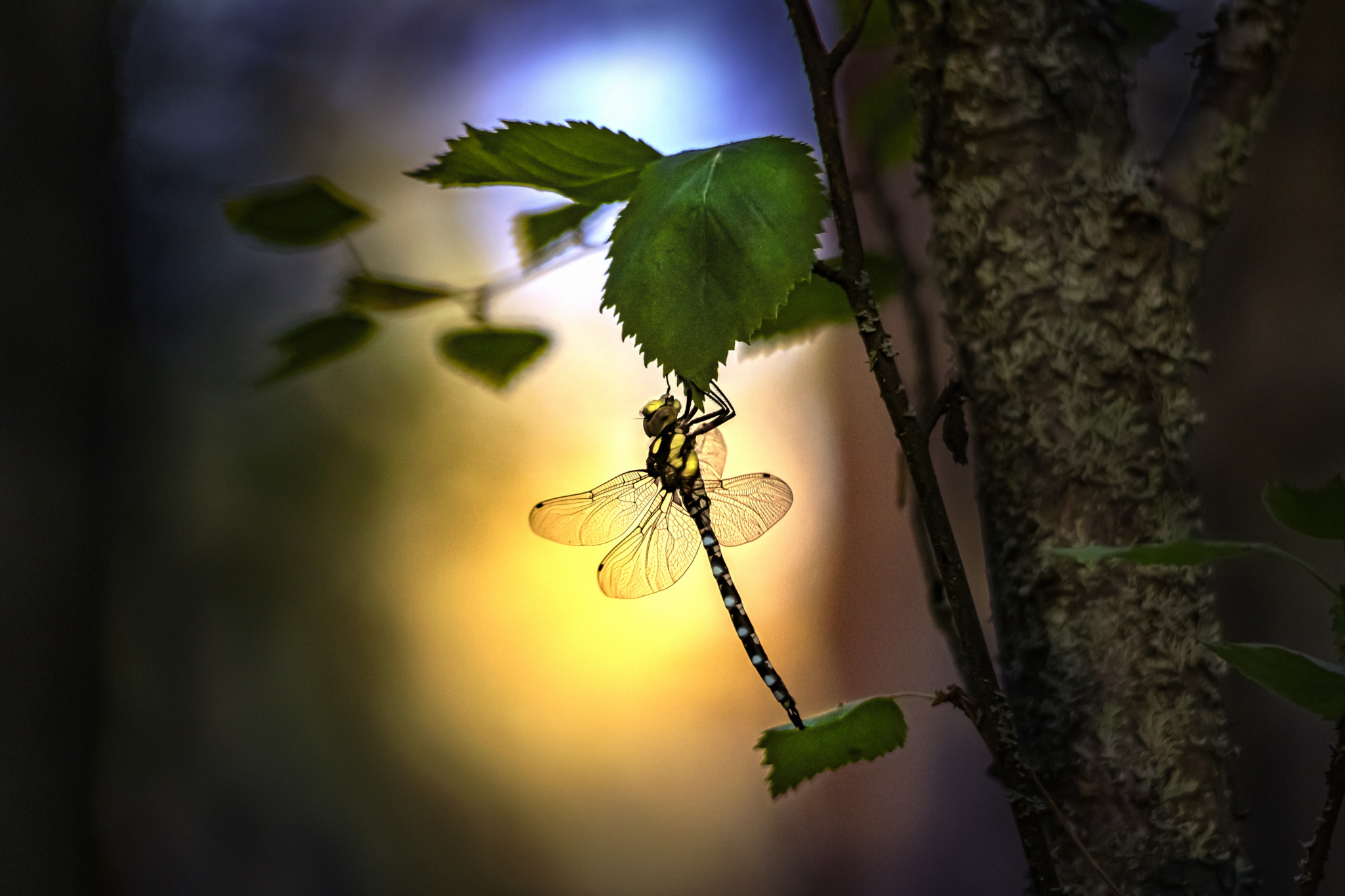Here’s a full, detailed overview of the Southern Hawker (Aeshna cyanea), one of Europe’s most common and striking dragonflies.
🟦 Southern Hawker (Aeshna cyanea)
Taxonomy
- Kingdom: Animalia
- Phylum: Arthropoda
- Class: Insecta
- Order: Odonata
- Family: Aeshnidae
- Genus: Aeshna
- Species: A. cyanea
Common name: Southern Hawker
Scientific name: Aeshna cyanea
Identification
The Southern Hawker is a large and colorful dragonfly, easily recognized by its bold green and blue markings and curious behavior—it often flies close to people and hovers inquisitively.
- Length: 70–78 mm
- Wingspan: 100–110 mm
- Body color:
- Males: Black body with bright blue and green spots, especially on the abdomen and thorax
- Females: Green and brown with pale green spots
- Eyes: Large and touching on the top of the head; greenish-blue in males, greenish-brown in females
- Wings: Clear with a slight amber tint near the base
- Flight: Strong, agile, and often hovering near water or woodland edges
It can be confused with other hawkers (Aeshna species), but its bold color pattern and habit of patrolling shaded areas help distinguish it.
Distribution and Range
The Southern Hawker is widespread across:
- Europe: From the British Isles and Scandinavia south to the Mediterranean
- North Africa: Local populations
- Western Asia: Extending into Turkey and the Caucasus
In northern Europe, it is one of the most common large dragonflies, thriving even in suburban gardens.
Habitat
Prefers woodland ponds, lakes, and slow-moving streams, often with nearby trees or bushes for shelter.
Also frequently found in gardens, parks, and forest clearings.
Larvae develop in standing or gently flowing freshwater with abundant aquatic vegetation.
Behavior
- Flight period: June to October (sometimes May to November in warm years)
- Activity: Diurnal, flying in sunshine and warm weather
- Territorial: Males patrol and defend stretches of water, chasing rivals and courting females
- Perching: Often rests vertically on tree trunks or branches
- Curiosity: Known to approach humans closely, sometimes hovering face-to-face
Diet
A fierce aerial predator that feeds on:
- Flying insects: Midges, mosquitoes, flies, wasps, butterflies, and other small dragonflies
- Larvae (nymphs): Feed on aquatic insects, tadpoles, and small fish
Hunts by sight, using excellent vision to intercept prey midair.
Life Cycle
- Mating: Males and females form a “wheel” position typical of dragonflies.
- Egg-laying (oviposition): Female lays eggs in rotting wood, moss, or vegetation near water.
- Larval stage: Lasts 2–3 years underwater; the larvae (nymphs) ambush prey among plants.
- Emergence: Mature larvae crawl out of water to transform into winged adults.
Adults live for several weeks, focused on feeding and reproduction.
Lifespan
- Larval stage: 2–3 years
- Adult stage: 6–8 weeks
Conservation Status
- IUCN Red List: Least Concern (LC)
- Population trend: Stable and common across Europe
The species adapts well to man-made ponds and garden water features, making it one of the most familiar large dragonflies.
Ecological Role
- Controls populations of mosquitoes and other flying insects
- Serves as prey for birds, frogs, and bats
- Indicator of clean, healthy freshwater ecosystems
Predators and Threats
- Birds, frogs, and larger dragonflies prey on adults
- Fish and aquatic predators feed on larvae
- Threats include water pollution, loss of breeding ponds, and habitat destruction
Key Identification Points
| Feature | Description |
|---|---|
| Scientific name | Aeshna cyanea |
| Common name | Southern Hawker |
| Family | Aeshnidae |
| Length | 70–78 mm |
| Wingspan | 100–110 mm |
| Male color | Black with blue and green spots |
| Female color | Brown-green with pale spots |
| Habitat | Woodland ponds, lakes, slow rivers |
| Flight period | June–October |
| Conservation status | Least Concern |
Interesting Facts
- The Southern Hawker is often seen far from water, patrolling woodland paths and gardens.
- It can hover motionless, fly backward, and even turn 180° in midair.
- Unlike many dragonflies, it tolerates shade and breeds in small, secluded ponds.
- Its Latin name cyanea refers to the blue coloration of the male’s abdomen.
Summary
The Southern Hawker (Aeshna cyanea) is a large, vividly colored dragonfly found across Europe’s forests, ponds, and gardens. With its bright blue and green markings, inquisitive behavior, and powerful flight, it stands out as one of the most recognizable and widespread dragonflies in its range. Its adaptability and beauty make it a true ambassador of healthy freshwater habitats.
Views: 1267
Subscribe to the newsletter:
